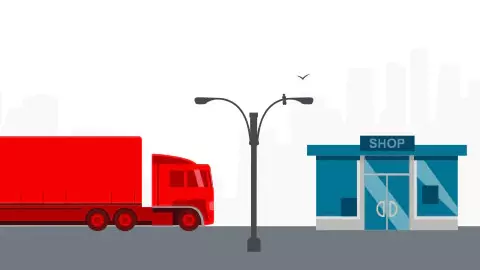Hurricane Preparedness for Businesses


If your business is in a hurricane region, don’t wait until the National Weather Service issues a hurricane warning to begin preparing. The actions that can help protect your business and help reduce the effects of a disaster can require weeks or even months to plan and execute.
Before hurricane season, assess how prepared your business is to weather a hurricane. Then make plans to help protect your business while you have time to execute those plans. Here are some steps you can include in your hurricane preparation plans that can help you keep your employees and business safe.
Long-Term Preparation
Long-term planning focuses on improving your property’s overall hurricane resistance and can include the following:
- Inspecting roof-mounted signs, equipment, guy wires and supports to verify they are anchored and in good repair.
- Repairing or replacing any weak or damaged windows, door hinges and latches.
- Establishing a system to protect all windows and building openings (shutters, plywood, etc.).
- Having generators or other means of emergency power available and testing this equipment periodically.
- If you are in a flood zone, consider taking steps to help protect your property from water damage:
- Create levees or flood walls where possible.
- Plan where to place sandbags to divert water away from buildings.
- Protect low-lying building entrances/openings.
- Do not use basements to store critical business equipment or materials.
- Install shut-off valves on sewer and other drainage lines to prevent reverse flow.
- Store water damageable materials and stock on pallets or in racks.
- Provide flood protection for fire sprinkler pump houses.
- Establish an emergency response team and assemble necessary supplies and equipment at a central, secure location. Inspect these supplies each year before hurricane season. Examples of supplies and equipment to have available include:
- Portable pumps and hoses
- Mops and squeegees
- Emergency lighting
- Sand and sandbags
- Shovels and axes
- Tarpaulins/plastic sheeting
- Lumber and nails
- Power and manual tools
- Building diagrams/schematics
- Ropes/fasteners
- Keep an inventory of outside equipment and materials that will need to be secured. This may include propane tanks and other hazardous materials, such as gas cylinders and flammable liquid drums.
- Identify a safe place to store vehicles and mobile equipment in advance to help protect them from strong winds and water damage.
- Establish contracts with vendors for critical equipment and machinery restoration as well as building and material cleanup.
Short-Term Preparation: As a Hurricane Approaches
Short-term plans should be developed well in advance of a hurricane. However, unlike long-term preparations, it may be more suitable to implement these plans when a hurricane or severe weather is in the forecast. Consider the following to help you prepare your business:
- Monitor forecasts closely to help you know when to act.
- Confirm that your employee contact lists are current.
- Secure all doors and shutter or board up windows to help protect them from flying debris.
- Clean out floor drains and catch basins and check drainage pumps.
- Move vehicles and mobile equipment to a safe location.
- Anchor and fill aboveground tanks to capacity with product or water to help keep them secure during the storm.
- Fill emergency generators and fire pump fuel tanks.
- Verify that fire protection equipment is operational.
- Make sure important records are protected – or duplicate them and move them off-site to a safe area.
- Shut down production processes safely and turn off power to noncritical equipment. Critical equipment, such as sump pumps and fire pumps, should remain operational.
- Shut off all flammable liquid, combustible liquid and gas lines in case a pipe breaks during the storm.
- Evacuate all employees.
Do not forget to tie down sheds, small outbuildings or similar structures that may not be designed for high winds. Move any items inside that could blow away in a powerful windstorm. Items including yard storage, benches, chairs, plant urns, signs or potted flowers could become flying debris and cause substantial damage during a storm.
Plan for Hurricane Recovery
Post-storm planning can help you ensure you have the right people and resources to help you recover after a hurricane. Well before the storm, identify the key employees needed for your recovery team. Once the storm has passed, use your employee call list to make sure everyone is safe and secure. Then assemble your recovery team to begin getting your business back on its feet.
The recovery team should include people qualified to repair electrical, mechanical, plumbing and fire protection systems, as well as general maintenance people for cleanup. Assign a recovery team leader who should make sure the team has cleanup supplies and necessary replacement parts and equipment. The team leader should also assess the damage and develop an action plan that addresses priorities, including:
- Safety hazards, including downed power lines, exposed electrical wires and leaking gas.
- Structural damage to buildings or damaged foundations.
- Impaired fire protection equipment and alarms.
- Critical production equipment and valuable stock required to restore production.
- Completion of temporary repairs so people can access the building safely.
The recovery team should also follow these steps:
- Require strict precautionary measures for any cutting or welding, including a formal hot work permit system such as found in NFPA 51B, Standard for Fire Prevention During Welding, Cutting, and Other Hot Work.
- Eliminate any unnecessary ignition sources and enforce no smoking regulations.
- Establish a procedure for removing storm- or reconstruction-related debris.
- Temporarily repair any holes or damage to the building or roof if it is safe to do so.
- Assess damaged contents to see what can be salvaged and prioritize repair or replacement.
- Photograph and/or record a video of any damage.
In addition, the recovery team will need to assess and repair fire protection equipment, security alarms and sprinkler systems and notify the fire department if any of those systems will be out of service. They should be cautious during electrical restoration and make sure that an electrician has checked, thoroughly dried and tested all systems and equipment before energizing electrical circuits. Any wet insulation should be stripped and replaced. All mechanical equipment and systems should be checked for leaks and damage, and cleaned and dried, as needed. Also, the water supply should be checked for possible contamination.
Be sure to maintain adequate security by performing a continual fire watch until normal operations can resume. Provide your employees with portable radios or cellphones and instruct them how to contact emergency response units.
Finally, keep your employees informed about any unsafe conditions and keep them updated on the progress of salvage operations.



